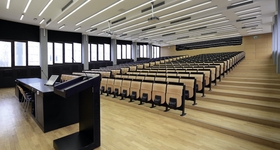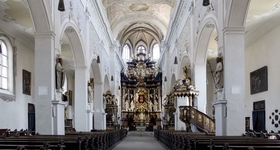Sacred buildings usually comprise elongated rooms with very high ceilings and stone surfaces. This creates an extremely long reverberation time. If we then talk about high speech intelligibility as a goal, that is a special task. The current mosque has a rather square floor plan, with a wide front. The floor is carpeted. The walls are plastered. This means that the topic of reverberation is less relevant in this case. In fact, the components of a mosque are always fundamentally similar, as the geometric shape in most of them is usually similar, just with variations in dimension. No matter how big the space, the sound has to be good everywhere.








